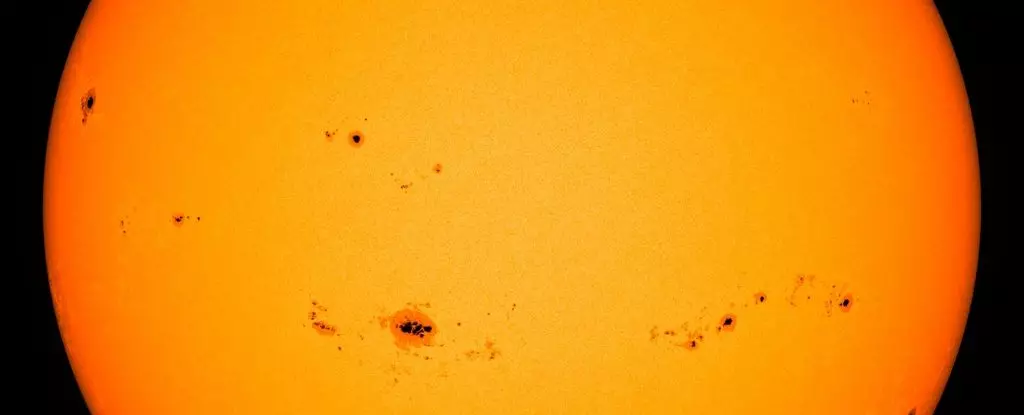As Earthlings, it is essential to recognize that our home is under the influence of a gigantic ball of plasma—our Sun. In a recent announcement that has captured the attention of scientists and space enthusiasts alike, NASA, alongside the National Oceanic and Atmospheric Administration (NOAA) and the Solar Cycle Prediction Panel, has confirmed the onset of solar maximum. This event signals a peak in the Sun’s 11-year activity cycle, introducing a period marked by an increase in sunspots, solar flares, and coronal mass ejections. However, what does this mean for life on Earth, and how should we prepare for the ensuing cosmic events?
At first glance, the concept of the solar cycle might seem straightforward, but it is steeped in complexity. The solar cycle typically spans approximately 11 years, during which the Sun’s magnetic field undergoes a series of transformations. The cycle is characterized by two distinct phases: solar minimum, a period of diminished solar activity, and solar maximum, marked by heightened activity levels. During solar minimum, sunspots are scarce, and solar activity calms down; conversely, solar maximum is a time when sunspots appear prolifically, resembling freckles on the Sun’s surface.
Sunspots are essentially regions of intense magnetic activity, where the magnetic fields are tangled and disrupted. This disruption inhibits the flow of hot plasma, resulting in cooler and darker spots when compared to the surrounding areas of the solar surface. The surge in sunspots during solar maximum is accompanied by dramatic solar phenomena such as solar flares—massive bursts of energy that can disrupt radio signals on Earth and coronal mass ejections, which can unleash immense amounts of solar particles directed toward our planet.
With solar maximum now official, one of the pressing questions revolves around the consequences of increased solar activity on Earth. Solar flares and coronal mass ejections can generate geomagnetic storms when they collide with Earth’s magnetic field. Such storms can have severe implications, including disruptions to power grid operations, aviation navigation systems, and satellite communications. However, it is crucial to note that while risks do exist, they are manageable, and scientists have devised ways to monitor and mitigate potential impacts.
On a brighter note, these solar phenomena also produce breathtaking natural wonders, such as the auroras commonly seen near the poles. When charged solar particles interact with Earth’s upper atmosphere, they emit radiant displays of light that astound onlookers. In fact, the frequency of such aurora events has surged, captivating skywatchers across the globe.
Despite the advances made in solar physics, predicting the specifics of solar cycles remains an arduous task. Forecasters generally analyze patterns in sunspot activity, yet the inherent nature of solar dynamics makes precise forecasting a significant challenge. According to solar astrophysicist Michael Wheatland, the drivers behind these cycles—a phenomenon known as the solar dynamo—are not yet fully understood. This uncertainty extends to questions about the precise timing of solar maximum and minimum as well as the strength of each cycle.
As noted by NOAA meteorologist Elsayed Talaat, while the solar maximum has been declared, identifying the exact month in which solar activity peaks will require months or even years of observation. Such unpredictability adds an intriguing layer of complexity to our understanding of the cosmos. Moreover, the current cycle has exceeded initial predictions made by agencies like NASA and NOAA, indicating a robust solar system environment that mirrors the inconsistencies inherent in solar behavior.
Future Insights and Scientific Endeavors
Interestingly, while the initial predictions have been confounded, some scientists considerably predicted robust solar activity with accuracy. This divergence prompts a deeper investigation into solar behavior and the models utilized to forecast solar activity in the future. As we continue to monitor the solar cycle, the insights gleaned from this phase could significantly enhance our comprehension of solar dynamics and contribute to improving predictive models.
In a broader context, this exciting period of solar activity is an opportunity for researchers, enthusiasts, and governments to collaborate in understanding and addressing the myriad effects of increased solar phenomena. As we traverse this solar maximum, we must remain vigilant yet curious about the challenges and wonders that lie ahead in our solar journey.
The solar maximum is not merely a scientific phenomenon; it embodies the intricate and ever-evolving relationship between Earth and the Sun. As we embrace the heights of solar activity, the prospect of unraveling the mysteries of our star offers a thrilling avenue for scientific discovery. Let’s prepare for both the potential challenges and stunning displays that the cosmos has in store.


Leave a Reply